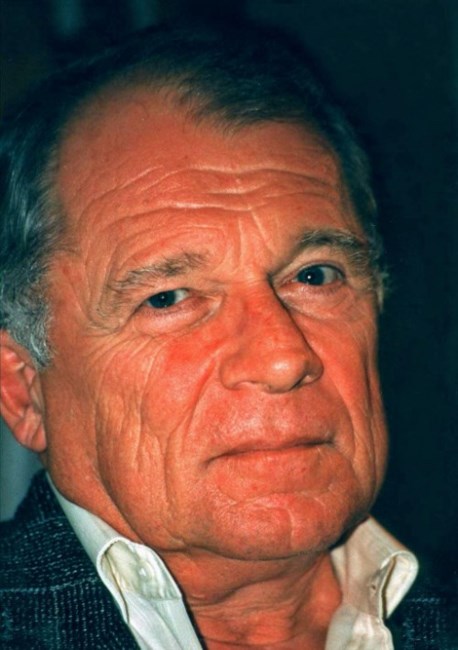
AVIS DE DÉCÈS
Francis Lee Bailey
Né(e) 10 JUILLET 1933

Though seen as arrogant and narcissistic at times, Bailey was also known to be bold, brilliant and meticulous in defense of his clients. The larger-than-life personality flew warplanes, sailed yachts, wrote books, was profiled in countless newspapers, ran a detective agency, carried a gun, went to jail for six weeks and was even disbarred.
The oldest of three children and the son of a newspaper advertising man and schoolteacher, he was born Francis Lee Bailey on July 10, 1933, in Waltham, Mass.
Bailey graduated from Kimball Union Academy in 1950, enrolling in Harvard University that same year. After two years at Harvard, Bailey dropped out to join the Navy. He later transferred to the Marines and became a fighter pilot. While in the military, Bailey volunteered for the legal staff and soon found himself the legal officer for more than 2,000.
In 1960, Bailey earned a law degree from Boston University, where he retained a 90.5 average; however, he graduated without honors because he refused to join the Law Review. During law school, Bailey founded a private detective agency that helped lawyers with cases.
In 1966, Bailey gained national attention when he succeeded in reversing the murder conviction of Dr. Sam Sheppard, an Ohio osteopath convicted in 1954 of murdering his wife. The case inspired the television series and movie “The Fugitive.” Sheppard had been convicted of bludgeoning his wife but claimed he’d been knocked out in a struggle with the killer after he returned home to discover the body. After a masterful performance in the courtroom by Bailey, Sheppard was acquitted.
Soon after the Sheppard case, Bailey agreed to represent DeSalvo, who told him he was the Boston Strangler who had raped and slain 13 women from 1962 to 1964. DeSalvo was facing an unrelated rape and assault charge and was not yet a suspect in the string of killings. At the 1967 trial, Bailey tried to show that his client was insane and revealed DeSalvo’s confession, but the judge ruled it inadmissible. DeSalvo was convicted and sentenced to life in prison.
In 1971, Bailey took on another high-profile case when he defended Capt. Ernest Medina in a court-martial over one of the Vietnam War’s most notorious atrocities—the 1968 massacre of 104 South Vietnamese villagers. The captain was charged with killing a woman and allowing his men to slaughter villagers. The captain was acquitted, and of the 26 men charged in the massacre, only Lt. William Calley, a platoon leader, was convicted of murder.
In 1976, Bailey represented Hearst, who was kidnapped by the Symbionese Liberation Army and who participated in armed robberies with the terrorist group. The publishing heiress had been photographed with her Symbionese Liberation Army captors in a 1974 San Francisco bank robbery. Bailey argued that she’d been brainwashed and had gone along to save her life. Hearst was convicted and went to prison for 22 months, but President Jimmy Carter later commuted her term.
The most notable and most public case Bailey took on in his career came in 1995, when he was part of the “dream team” of lawyers, including Johnnie Cochran, Alan Dershowitz, Barry Scheck, and Robert Shapiro, in defense of former football player O.J. Simpson. Simpson was charged with killing his former wife, Nicole, and her friend Ronald Goldman in a knife attack.
While the prosecution’s case seemed overwhelming, Bailey aggressively and famously crossed-examined Los Angeles police detective Mark Fuhrman. The detective admitted he had no search warrant when he obtained crucial evidence at Simpson’s home, including a bloody glove matching one left at the murder scene. The defense argued, but never proved, that Fuhrman planted the glove to frame Simpson.
In addition to his illustrious law career, Bailey was an avid yachtsman and pilot, flying his jet around the country to cases and meetings. He also owned a helicopter manufacturing business in Michigan.
Bailey was married four times and divorced three. His fourth wife, Patricia, died in 1999. He is survived by his sister, Nancy; his three sons, Bendrix, Brian and Scott; and five grandchildren.
Montrez votre soutien
Envoyez Vos
Condoléances
Partager
L'avis De Décès
Obtenir les mises à jour
Partager l'avis de décès
- RECEVOIR DES RAPPELS
v.1.9.5